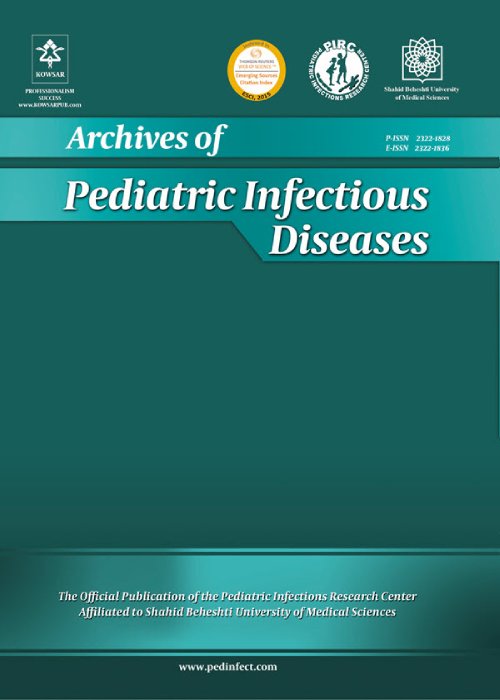Vancomycin and Linezolid Resistant Staphylococcus in Hospitalized Children
Author(s):
Abstract:
Background
Staphylococcus aureus is a major cause of serious hospital and community acquired infections, particularly in colonized individuals..Objectives
The study was carried out in a tertiary care center in Tehran, Iran to identify the frequency of hospital acquired methicillin resistant Staphylococcus aureus (HA-MRSA) colonization and its antibiotic susceptibility pattern and molecular characteristics..Patients and Methods
This point-prevalence study was performed on 631 children who were admitted for at least 48 hours in different wards of Mofid children’s hospital in Tehran, Iran. Samples from anterior nares of these children were taken with sterile swab and cultured. If Staphylococcus aureus (S. aureus) was isolated, methicillin resistance and antibiotic susceptibility pattern were diagnosed according to Center for Disease Control and Prevention (CDC) guidelines of 2011 and Clinical and Laboratory Standards Institute (CLSI), and molecular analysis were determined by minimum inhibitory concentration (MIC) and polymerase chain reaction (PCR) methods..Results
Rate of colonization with S. aureus and methicillin resistant Staphylococcus aureus (MRSA) were 3.2% and 1.1% (1.1% of total and 35% of S. aureus isolates), respectively. All MRSA isolates were susceptible to rifampin and clindamycin. Resistance to vancomycin was reported in six Staphylococcus strains. Resistance to linezolid was detected in 19/20 Staphylococcus. Molecular analysis of isolates showed that all vancomycin resistant S. aureus isolates contained Van A or Van B gene, and 15/19 linezolid resistant strain was positive for chloramphenicol-florfenicol resistant gene (cfr gene)..Conclusions
The rate of MRSA colonization varies in any area, and the knowledge of acquisition risk factors and antibiotic susceptibility pattern are essential in prevention and treatment of MRSA infections. Based on our study, we suggest that clindamycin and rifampin are good choices in empiric treatment of patients suspected to have HA- MRSA infections until results of culture and antibiotic susceptibility pattern are prepared. In respect to the prevalence of linezolid resistance in this study, we suggest avoiding the use of linezolid as empiric therapy in HA-Staphylococcus infection..Keywords:
Language:
English
Published:
Archives of Pediatric Infectious Diseases, Volume:1 Issue: 1, Oct 2012
Pages:
4 to 8
magiran.com/p1095233
دانلود و مطالعه متن این مقاله با یکی از روشهای زیر امکان پذیر است:
اشتراک شخصی
با عضویت و پرداخت آنلاین حق اشتراک یکساله به مبلغ 1,390,000ريال میتوانید 70 عنوان مطلب دانلود کنید!
اشتراک سازمانی
به کتابخانه دانشگاه یا محل کار خود پیشنهاد کنید تا اشتراک سازمانی این پایگاه را برای دسترسی نامحدود همه کاربران به متن مطالب تهیه نمایند!
توجه!
- حق عضویت دریافتی صرف حمایت از نشریات عضو و نگهداری، تکمیل و توسعه مگیران میشود.
- پرداخت حق اشتراک و دانلود مقالات اجازه بازنشر آن در سایر رسانههای چاپی و دیجیتال را به کاربر نمیدهد.
In order to view content subscription is required
Personal subscription
Subscribe magiran.com for 70 € euros via PayPal and download 70 articles during a year.
Organization subscription
Please contact us to subscribe your university or library for unlimited access!


